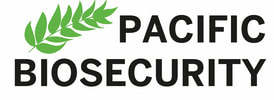|
Kiritimati (pronounced Kirismas) is the world's largest atoll and home to a number of threatened seabird populations. Almost the entire atoll is a wildlife reserve.
BACKGROUND In February 2013 a single small (1 hectare) infestation of yellow crazy ants was discovered in the main settlement on Kiritimati, while Monica was running ant survey exercises for a biosecurity workshop led by Eco-Oceania’s Ray Pierce and Bill Nagle from Pacific Invasives Initiative (PII). Although the infestation only covered a little over a hectare, finding funding to eradicate it proved to be difficult. In December 2014 the New Zealand Ministry of Foreign Affairs and Trade Aid Programme contracted Pacific Biosecurity to lead implementation of the Activity “Building resilience to biosecurity threats from invasive ants throughout the Pacific” over five years. One of the goals was to eradicate yellow crazy ants on Kiritimati. ACTIVITY UPDATE Yellow crazy ants were not seen in Kiritimati between November 2016 and April 2019. In April 2019 a small number of ants were detected in one small area (likely one isolated nest). MELAD staff will continue monitoring the ants and treating again if necessary. Grateful thanks to the MFAT Partnerships for International Development Fund for enabling this work, and to MELAD (Ministry of Environment, Land & Agricultural Development) staff, and Ray Pierce of Eco-Oceania for their contributions. |


